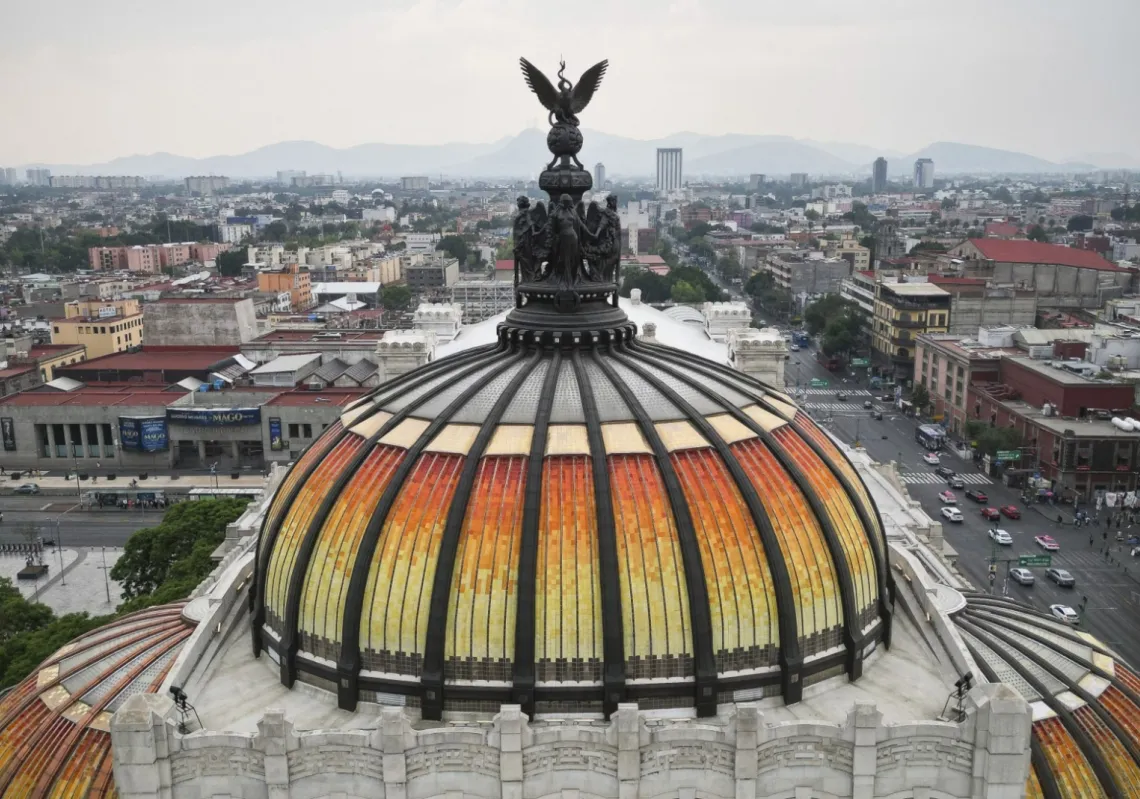2024 was marked by a series of unexpected and shocking 'black swan events' that not even the most astute analyst could have predicted. Hamas's shocking attack on Israel in 2023 has had a domino effect, leading to a series of seismic events in the region throughout 2024. Al Majalla reviews each one in analytic detail and shares predictions for the coming year.
October 7 aftermath
The year’s shocks were set up 85 days before 2024, which began with the surprise Hamas attack on 7 October 2023. The incursion from Gaza into Israel caught the world off guard—especially those it targeted. Throughout 2024, the repercussions have profoundly shifted regional dynamics, extending far beyond the conflict between Palestinians and Israelis, and will surely be felt well into 2025.
By the end of 2024, the Gaza war will have lasted almost 15 months, longer than all the wars between the Arab world and Israel combined since 1948. Those conflicts included three major wars – 1956, 1967 and 1973 – although each involved broader participation and larger battlegrounds.
Despite the immense disparity in military power heavily favouring Israel, no one foresaw the Gaza war lasting this long. Both troop numbers and equipment heavily favoured Israel in 2024. Although asymmetric wars tend to last longer— and this time around, the irregular forces of Hamas’ military wing, the Qassam Brigades, alongside other Gaza factions, were fighting a sophisticated modern army—the current conflict looks set to outlast the year, its sheer longevity a surprise in and of itself.
The improbability of this stands out all the more due to the confined geographic scope of the conflict and Israel's crippling siege on Gaza. The ability of Gaza's armed groups in being able to continue fighting Israeli troops—despite the assassinations of many of their leaders, including Yahya Sinwar, Ismail Haniyeh, Marwan Issa and Mohammed Deif, the depletion of their military supplies and the overwhelming, devastating force used against them—has defied expectations.
For its part, Israel has been accused of war crimes and crimes against humanity by the world's top courts and experts. Additionally, the International Criminal Court issued arrest warrants for Israel’s Prime Minister Benjamin Netanyahu and its former Defence Minister Yoav Galant.

Palestinian civilians in Gaza also surprised the world with their astounding resilience in the face of unparalleled adversity. They have endured relentless bombardment, repeated displacement and enforced starvation due to Israel's intentional restriction of aid. Even hospitals have not been spared by Israel's brutal war, and the healthcare sector faces an acute shortage of medicine and medical supplies.
It was also unexpected that Israel's long-established security and intelligence institutions, equipped with cutting-edge surveillance technology, have been unable to locate the majority of tunnels used by Hamas and other factions.
These tunnels have proved essential in their ability to help fighters launch ambushes targeting Israeli occupation forces and served as sites for the production of rudimentary weapons. They also stored weapons, provided shelter for faction leaders, and housed Israeli hostages taken during the October 7 attacks.
Gaza’s future remains largely uncertain. Ideas of what will happen when the guns fall silent, widely known as 'the day after', remain vague.
Degradation of Hezbollah
Hezbollah intensified its clashes with Israel in what the Lebanon-based militia referred to as a 'war of support and distraction' in solidarity with Gaza the day after the October 7 attacks. For the better part of 2024, the tit-for-tat exchanges between Israel and Hezbollah were largely contained and measured.
By September, however, the border war reached a key turning point, starting with Israel's detonation of thousands of pagers and walkie-talkie devices belonging to Hezbollah operatives, which killed dozens and maimed thousands, even uninvolved bystanders and children, who happened to be nearby.
This unprecedented security breach sent shockwaves not only within Hezbollah but throughout the 'axis of resistance' who became paranoid over the major security breach, affecting the ability of Iran-backed groups to communicate with each other.
Read more: Pager attack transforms 'axis of resistance' into 'axis of paranoia'
From that point on, Israel was able to capitalise on the chaos with further targeted operations. These included systematic assassinations of dozens of senior leaders, notably Secretary General Hassan Nasrallah, who was killed alongside others in a devastating bombing of a building in Beirut’s southern suburbs just weeks later.
Israel also struck Hezbollah's weapons depots across multiple locations. And while the group quickly filled leadership gaps and demonstrated resilience in ground battles that began in southern Lebanon on 1 October, it undoubtedly suffered major blows and setbacks.
Its broader support network was also significantly weakened due to Israel's widespread destruction of villages and towns in southern Lebanon and parts of Beirut’s suburbs. This devastation resulted in the displacement of over 1 million people under extremely challenging conditions.
As a result, Hezbollah was compelled to accept onerous terms when a ceasefire agreement came—something it had rejected multiple times during negotiations with US envoy Amos Hochstein. They included a flexible and ambiguous implementation mechanism for the main pre-existing international agreement on peace terms there, UN Security Council Resolution 1701.
This mechanism, officially titled ‘Declaration on the Cessation of Hostilities Agreement and Related Commitments on Enhancing Security Arrangements and Implementation of UN Security Council Resolution 1701,’ is arguably the most disadvantageous version for Hezbollah.
Read more: Intricately bound: Lebanon’s army and UN Resolution 1701
















